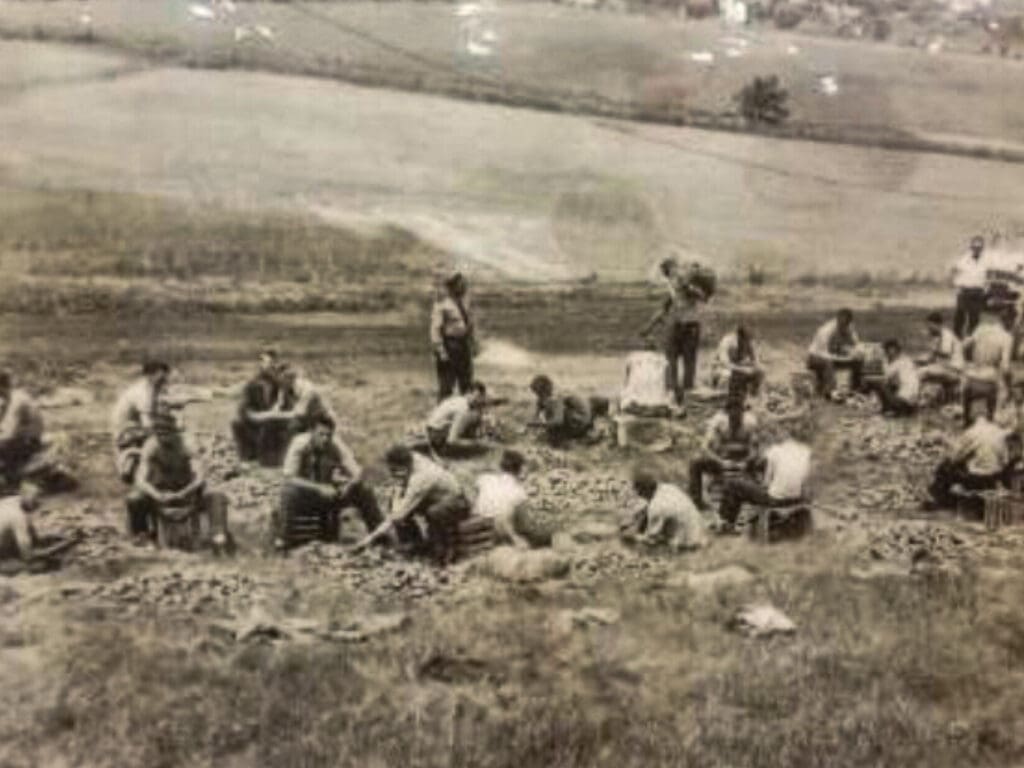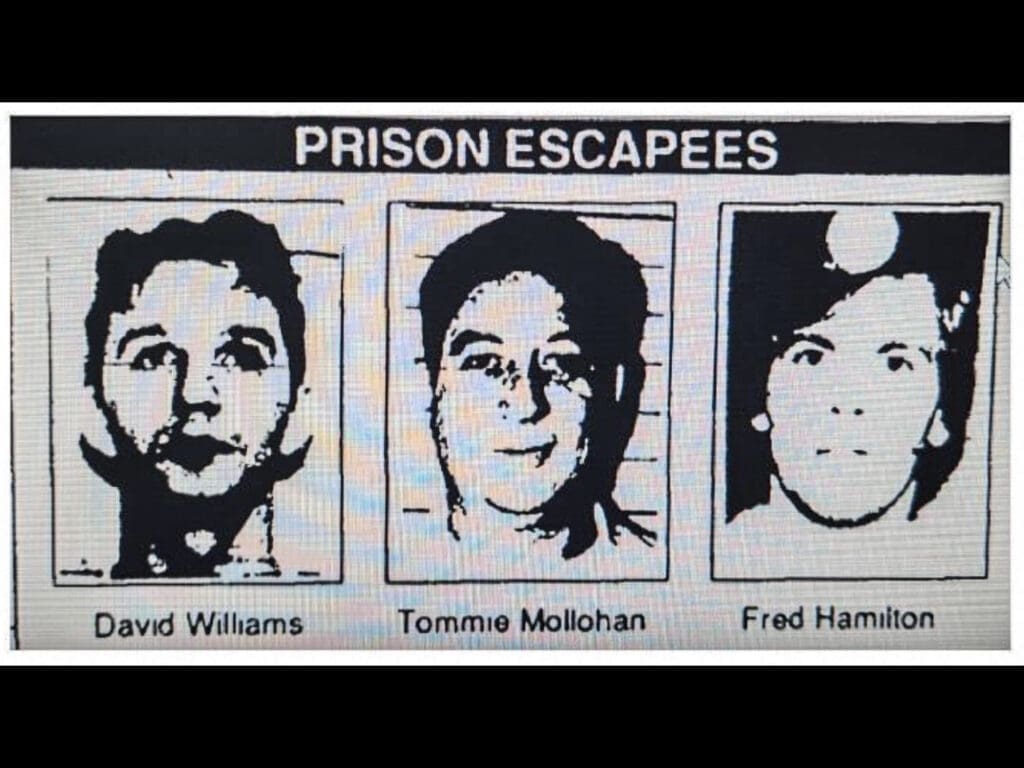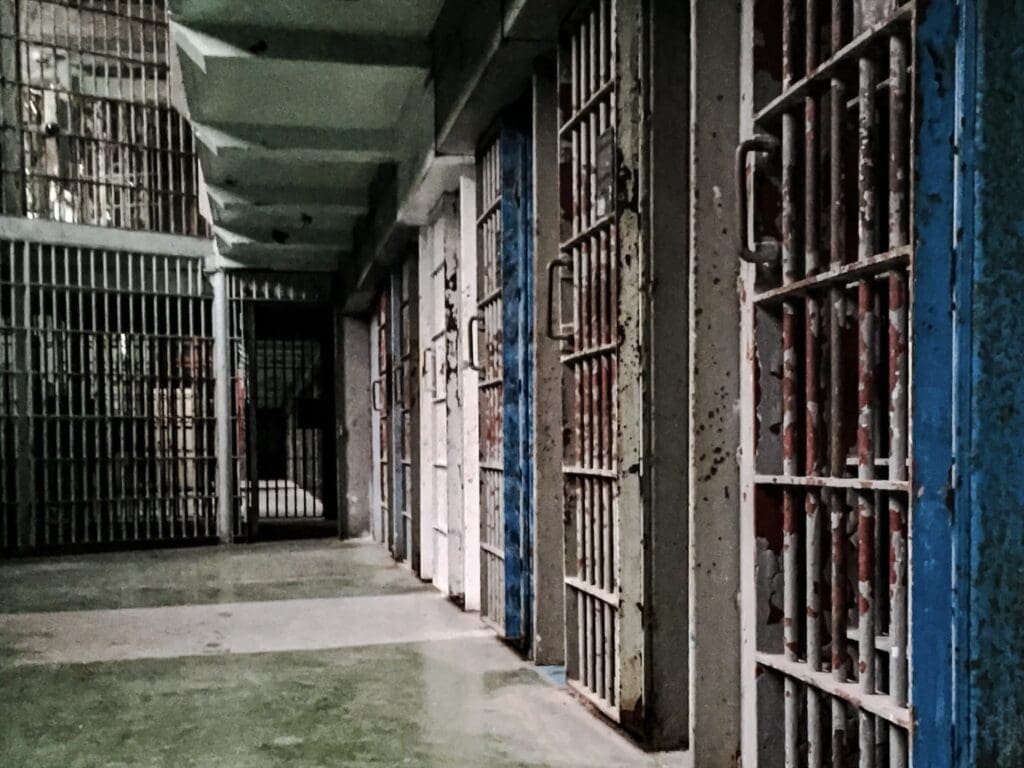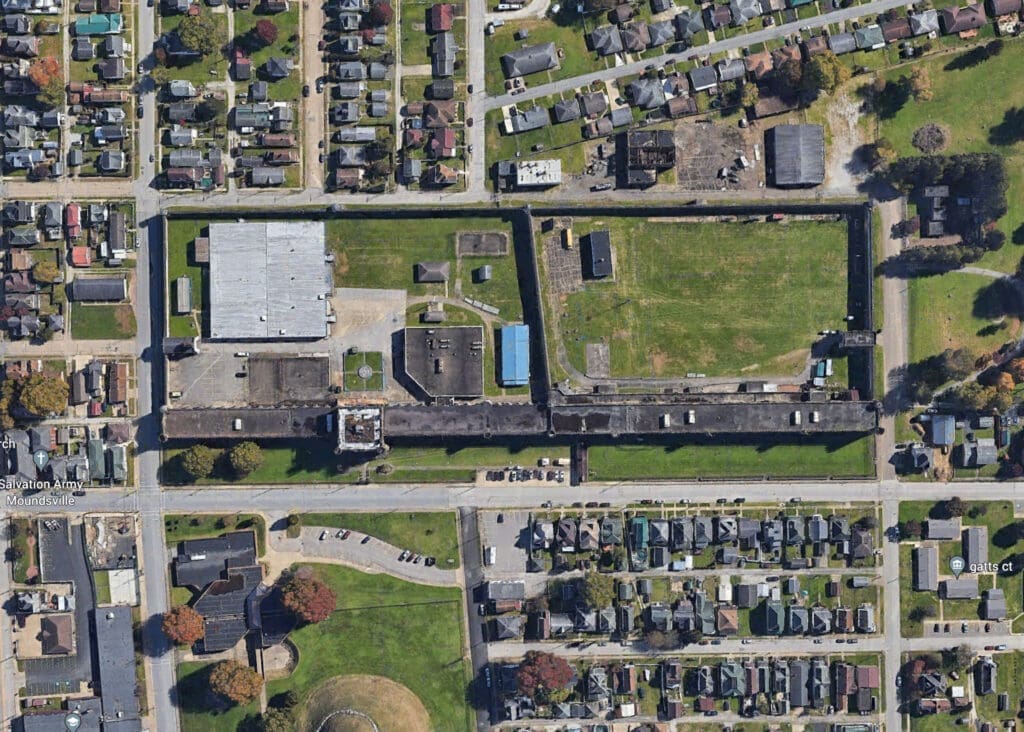
Two weeks before the notorious greenhouse escape, Correctional Officer Maggie Gray saw Tomie, Fred, and David huddled together in a tight circle on the Main Dining Room (M.D.R.) Hallway.
Officer Gray approached them, “What are you guys doing? Planning an escape?”
Tomie chuckled, “No, we’re just shooting the breeze.”
“Well, if you guys are going to break out; just don’t go on a holiday.”
They all laughed. When Tomie returned to the penitentiary after being captured, he saw Officer Gray in the Captain’s office and smirked, “At least we didn’t go on a holiday.”

FACTORS LEADING TO ESCAPE
There were several contributing factors that enabled the greenhouse escape to be successful. They were the penitentiary administration, the history of the inmates, and their skill sets. With these three items in place, the escape was inevitable.
Carl Legursky was the warden for the West Virginia Penitentiary at the time. He was a well-known and respected State Trooper. Wood County Deputy, Brady Stephens, remembered Legursky’s teaching at the law enforcement academy and stated, “He knew what he was doing and he was a man’s man.”
However, there were others who didn’t respect Legursky, especially as a warden. One Correctional Officer, who asked to remain anonymous stated, “Legursky was the reason they were able to escape.” Some correctional officers believed Legursky favored the inmates over the officers.
Another reason why people blamed Legursky is because Tomie approached him and told him the correctional officers were interfering with their jobs as he, Fred, and David worked at the prison greenhouse. After hearing Tomie’s complaints, Warden Legursky ordered correctional officers to surrender their greenhouse keys to the inmates.
The only ones who had access to an unsupervised building with shovels, pickaxes, electrical supplies, landscaping instruments, and many more tools conducive for building a tunnel were three criminals convicted of murder and serving life sentences.
The second reason the escape was successful was that each of the three inmates previously escaped from the penitentiary. They knew they could break out so they would again.
Fred bragged, “I’ve gotten out before, I’ll get out again.”
The skill sets of the inmates was also a contributing factor for the escape. Tomie was a fix-it man, a jack of all trades. He worked as a maintenance man at the penitentiary which provided access to a variety of tools. Fred had taken electrical classes which enabled him to be very helpful in providing lighting for the tunnel. Before David committed murder, he worked in a coal mine and knew the strategy on how to build a tunnel.

THE TUNNEL
The concept of a greenhouse situated within the confines of a penitentiary began with the older inmates. Those who were classified as “O and I” (Old and Infirmed) started growing flowers and selling them to correctional officers and visitors to the penitentiary.
In 1989, it was decided to expand the horticultural activity and build a greenhouse. It was located just south of the prison industry building and east of Tower Three. Tower Three was normally unmanned because of the shortage of correctional officers and this was a well-known fact amongst the inmates.
When Tomie, Fred, and David began working together in the greenhouse, it didn’t take long before they began scheming on how to construct a tunnel. They slowly strategized while Tomie scrummaged for supplies throughout the penitentiary to accomplish their feat.
The opening of the tunnel was dug under a rectangular, wooden footlocker. Above the footlocker, there were shelves in which they draped hoses and other materials to cover the box to avert suspicion. On the top of the footlocker was a homemade latch to secure it. One observer stated it looked like something straight out of “Hogan’s Heroes.”
Once the ground was broken beneath the footlocker, using shovels and pickaxes, the inmates dug down to a depth of eight feet. While one inmate dug, one stood at the entrance of the greenhouse watching to see if anyone was coming. David and Fred did most of the digging because they were much younger than Tomie.

Once they reached a depth, which they estimated to be below the walls of the penitentiary, they began digging horizontally. They eventually dug thirty-two feet to be beyond the perimeter of the prison. They dug a couple of feet in the tunnel each day.
As they tunneled, they placed the dirt in plastic casings of mattresses which they ripped open. They filled the mattress bags and brought the dirt back to the opening. With some of the dirt, they bagged it up and used it to shore up the tunnel walls.
Other dirt, they put in bags with peat moss and placed them next to the greenhouse. An urban myth of the penitentiary was that dirt from the tunnel was given to visitors in outgoing flowerpots, but Fred stated that was not true.
After several feet stretched out toward Tower Three, Fred began connecting strings of electrical lighting which were plugged into an outlet in the greenhouse.
When the tunnel was completed, there was electrical lighting strung from the opening almost to the exit hole. One correctional officer stated, “It was as bright as Christmas in there (the tunnel).”
Since David worked as a coal miner, he knew the importance of airflow within a tunnel. There were several fans set up within it to circulate the air so the inmates would not asphyxiate. The fans had been stored in the greenhouse to keep the flowers cool. The inmates were meticulously cautious of safety procedures as they built the tunnel.
Painstakingly, inch by inch and foot by foot, they patiently cleared out more and more dirt. After they worked in the tunnel, they changed clothes in the greenhouse, so the correctional officers did not see their clothes saturated with dirt.

When they believed they were on the other side of the wall of the prison, they built a ladder out of materials in the greenhouse. They dug sixteen feet straight up and when the shovel first struck through the sod on the outside of the walls on Washington Street, the inmates had to subdue themselves from breaking out in raucous joy.
The inmates had a wooden manhole cover made in the prison industry building. They placed it over the small opening of the exit until they could dig the opening wide enough to escape. The manhole cover was so elaborately made that if the inmates had placed it back on the top when they left the tunnel, they might not have been discovered so quickly.
While no one else escaped but the three, others helped construct the manhole cover and knew about the plan. Thomas Drescher who was convicted of murder and serving a life sentence stated, “Everybody here is still laughing. It was a well-known secret. It was as plain as day what they were doing.”
The height of the tunnel was tall enough for a person to walk upright if they slightly hunched their head down. One of the first correctional officers who walked through the tunnel was six feet tall and said, “I didn’t have to bend over very much to get through it.”
The inmates also walked through the tunnel with their hands behind their backs to change their center of gravity to assist their mobility. Many coal miners are familiar with this technique. Tomie, Fred, and David spent a great deal of time inside the tunnel and knew how to navigate through it quickly.
The tunnel was well constructed, and people were amazed when they viewed it. Former Warden Donald Bordenkircher said, “The tunnel was big enough and well enough done that everybody in the penitentiary could have walked through it.”
Fred stated, “It took about four months to build.”

DISCOVERING THE TUNNEL
At 3:15 p.m. on February 19, Shane Williams and his cousin, Gordon Gump saw a suspicious man walking down the street wearing a nice sweater with brown work boots. They thought his dress was unusual and when he hung his head down to avoid contact, they looked over to the walls of the prison. Gordon was initially shocked as he saw a hole and asked Shane to call the police.
When they slowly approached the hole, they noticed a ladder made of three-foot-long sections of pipe and the rungs connected with elbow fittings. The ladder was placed over the hole giving the impression the escaped inmates did not want anyone to fall into it. When the boys peered into the hole, they saw a pick, shovel, plastic bag, and a jacket at the bottom of it.
Once the authorities heard the news, they responded by locking down the penitentiary and setting up roadblocks leading out of Moundsville.
Twenty-three different law enforcement agencies were contacted to be involved in the search.
https://ledenews.com/greenhouse-getaway-the-1992-escape-from-the-w-va-penitentiary-part-one

